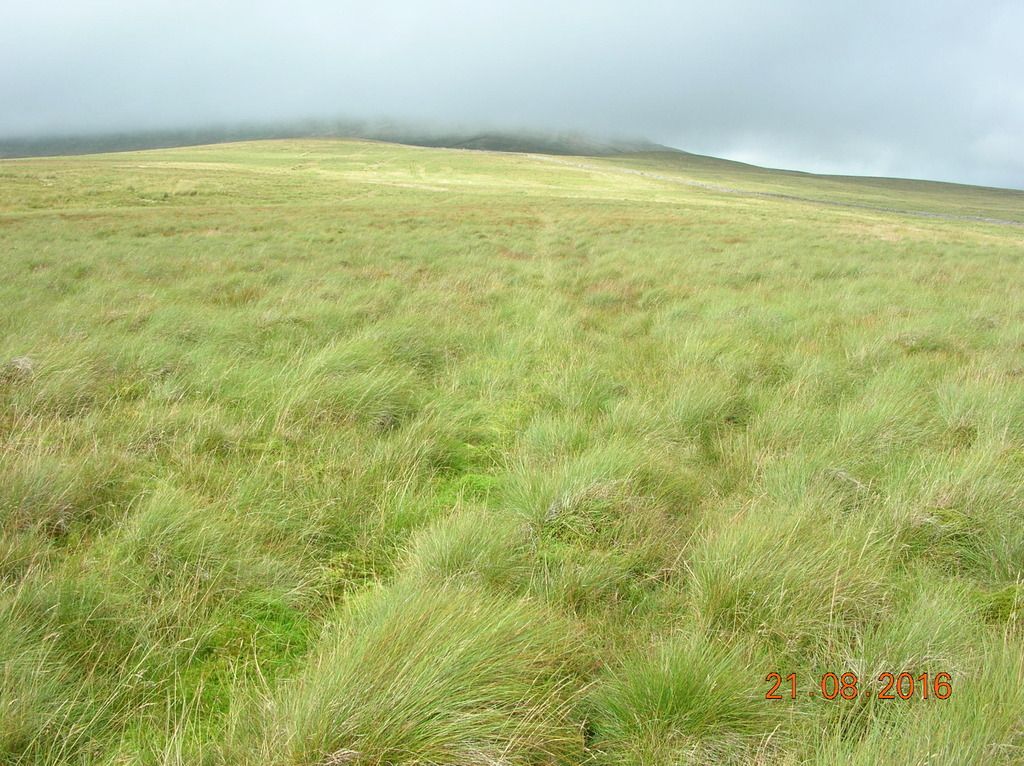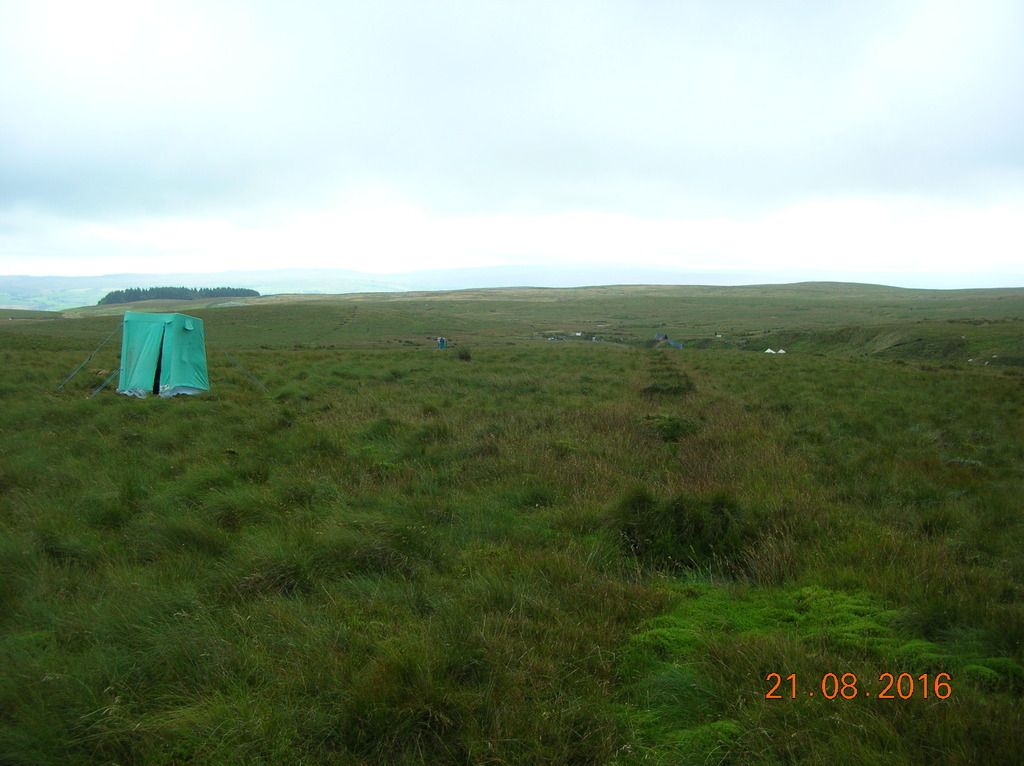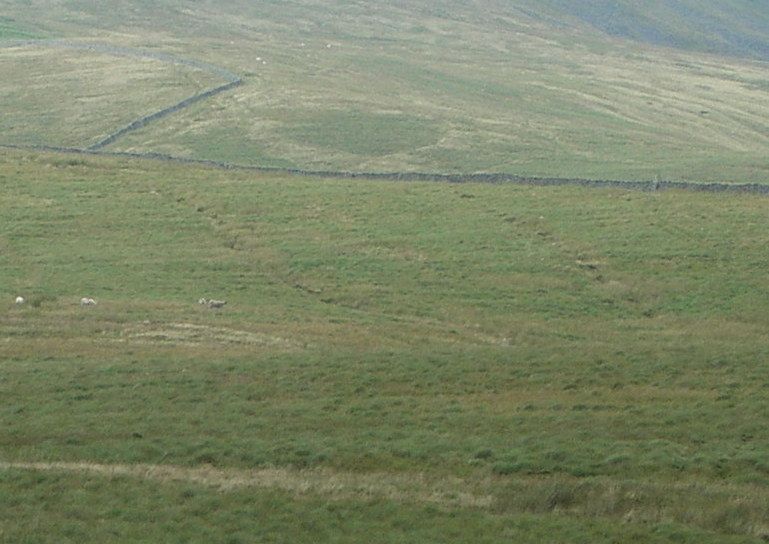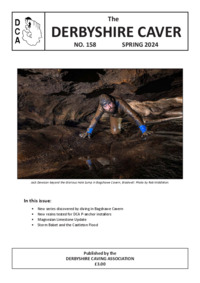Simon Wilson
New member
After derigging Rift Pot yesterday I went for a walk around the Allotment and then across Grange Rigg to GG. I scrounged a brew, sat down to chat with a few Craven members and conversation soon turned to the subject of moorland grips as it would, naturally. I was told how they had discussed the grips with the people doing the grip filling near GG. I was then taken for a closer look at some filled grips which have turf dams placed in them. I was given a guided tour of Birkbeck's Trench which looks very much like an overgrown grip but is in fact an interesting bit a caving archeology 158 years old.
I then walked by a different route back to the Allotment. I estimate that less than 10% of the grips have been manually dammed and the rest have filled in and re-vegetated naturally. Almost the whole of the Allotment is covered in filled grips and none appear to have been dammed.
A typical naturally re-vegetated grip on Grange Rigg in the centre of the photo with some more further up the fell.

Re-vegetated grips near Grange Rigg Pot.

Looking down a grip running towards GG that has been filled with a series of turf dams.

Looking up the fell from GG where two grips can be seen that have been dammed about 1/2 a mile away. The few grips that have needed to be filled have been running down the fell and have been kept open by the flow of water.

I now refute the following statement.
Peatland restoration throughout the Pennines is being coordinated by Yorkshire Peat Partnership, Lancashire Peat Partnership, The North Pennines AONB Peatland Programme and Moors for the Future.
http://www.yppartnership.org.uk/restoration/small-grips-and-gullies/
This is an assessment of blanket bogs in the Forest of Bowland by NE updated in 2015.
http://forestofbowland.com/files/uploads/pdfs/Appendix%202%20Bowland%20Priority%20Peat%20information%20matrix-%20update%20March%202015.pdf
They have only been filling grips that were running and they are quite a small proportion.
Who does it and how is it funded?
http://www.yppartnership.org.uk/about-us/how-we-are-funded/
It's very difficult to see what part landowners play in the process.
On the contrary to landowners filling grips, at least one landowner who owns a large estate in the mid Pennines appears to have a very belligerent attitude to grip filling. After many years he has finally agreed to a Higher Level Stewardship Scheme which will include the filling of some 'historical' grips but he will not fill grips that he has dug since 1997. Under that scheme you and me will pay this multi-millionaire ?2.5 million to try to reduce the damage he is doing to our countryside. http://www.energyroyd.org.uk/archives/4982
But that is just one landowner and generally things are looking good for the future of our moors.
I then walked by a different route back to the Allotment. I estimate that less than 10% of the grips have been manually dammed and the rest have filled in and re-vegetated naturally. Almost the whole of the Allotment is covered in filled grips and none appear to have been dammed.
A typical naturally re-vegetated grip on Grange Rigg in the centre of the photo with some more further up the fell.

Re-vegetated grips near Grange Rigg Pot.

Looking down a grip running towards GG that has been filled with a series of turf dams.

Looking up the fell from GG where two grips can be seen that have been dammed about 1/2 a mile away. The few grips that have needed to be filled have been running down the fell and have been kept open by the flow of water.

I now refute the following statement.
Most moorland grips have not been filled because they haven't needed filling and those grips that have been filled have not been done by landowners.JAA said:No Simon, most if not all moorland gripping has been filled in by landowners.
Peatland restoration throughout the Pennines is being coordinated by Yorkshire Peat Partnership, Lancashire Peat Partnership, The North Pennines AONB Peatland Programme and Moors for the Future.
http://www.yppartnership.org.uk/restoration/small-grips-and-gullies/
This is an assessment of blanket bogs in the Forest of Bowland by NE updated in 2015.
http://forestofbowland.com/files/uploads/pdfs/Appendix%202%20Bowland%20Priority%20Peat%20information%20matrix-%20update%20March%202015.pdf
They have only been filling grips that were running and they are quite a small proportion.
Who does it and how is it funded?
http://www.yppartnership.org.uk/about-us/how-we-are-funded/
It's very difficult to see what part landowners play in the process.
On the contrary to landowners filling grips, at least one landowner who owns a large estate in the mid Pennines appears to have a very belligerent attitude to grip filling. After many years he has finally agreed to a Higher Level Stewardship Scheme which will include the filling of some 'historical' grips but he will not fill grips that he has dug since 1997. Under that scheme you and me will pay this multi-millionaire ?2.5 million to try to reduce the damage he is doing to our countryside. http://www.energyroyd.org.uk/archives/4982
But that is just one landowner and generally things are looking good for the future of our moors.


